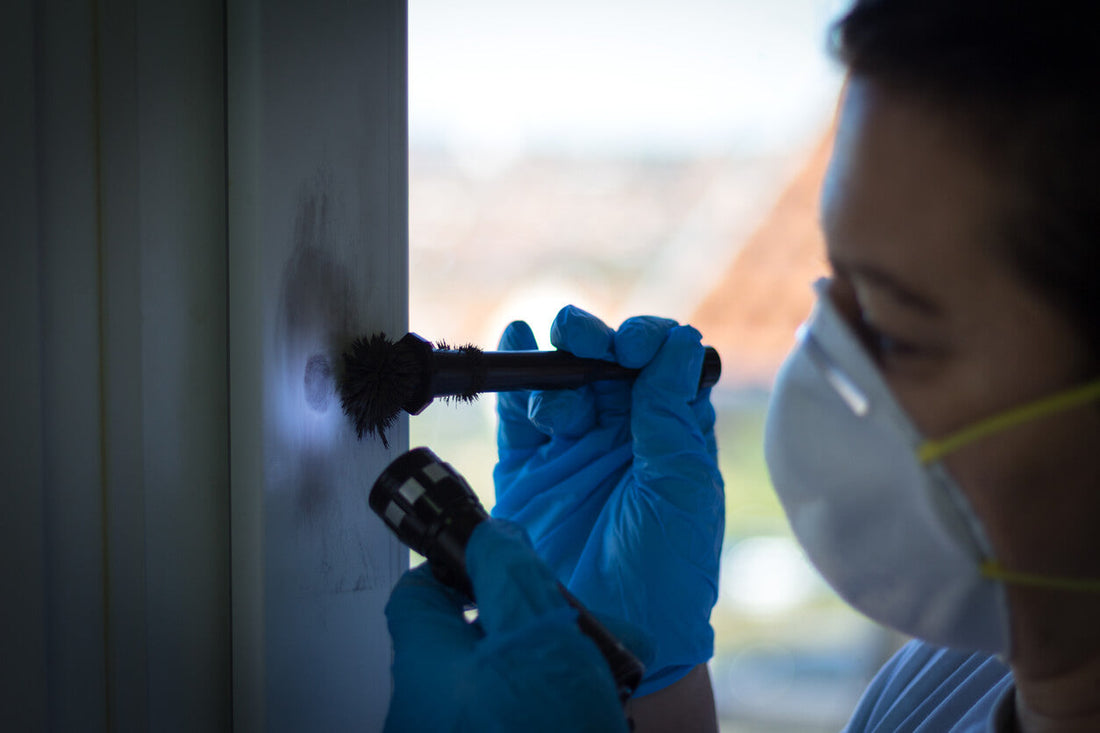
How ALS Technology Is Lighting Up Crime Scenes
Share
ALS technology is an integral part of crime scene success. In today’s world, locating, identifying and analyzing critical evidence often depends on the presence of ALS technology during an investigation.
While this technology has been used in the forensic field for decades, today’s ALS products utilize complex components that both enhance the user experience and lead to better outcomes. Here’s what you need to know about ALS technology and how it’s lighting up crime scenes all over the world.
Quick Takeaways
- ALS, also known as alternative light source, technology reveals hidden evidence in crime scenes through fluorescence
- The discovery, collection and documentation of proper evidence is the most crucial step in any crime scene investigation
- Alternative light sources consist of 2 main components: their light source and its barrier filter/s
- Some types of crime scene evidence naturally fluoresce, whereas others require a developing agent to be seen
ALS crime scene tools use advanced technology to help investigators identify and document evidence, ultimately providing continual support to the efforts of law enforcement teams.
What Is ALS Technology?
ALS, or alternative light source, technology is a non-invasive, non-destructive method used for effectively analyzing different types of crime scene evidence. ALS technology reveals evidence and clues that cannot be seen by the naked eye and may prove to be significant.
How Does ALS Technology Work?
Alternative light sources consist of 2 main components: the light source and a barrier filter. Depending on the type of ALS technology, the type of light source and number of barrier filters vary. Later on in the article, we’ll go into detail about the different types of light sources and filters.
For now, it is important to know that ALS barrier filters only allow specific wavelengths of light to pass through. This increases the contrast between evidence and its background, helping in the location and identification of potential evidence.

ALS technology that sheds light in the visible range, 400-700 nanometers (nm), can reveal evidence through fluorescence.
What Is Fluorescence?
Fluorescence is defined as “the emission of a long wavelength of light by a certain substance that has absorbed a shorter wavelength.” When molecules capable of fluorescence, also known as fluorophores, are subjected to light at a certain wavelength, they absorb energy and shift into a state with higher energy.
Soon after its exposure to light, fluorophores return to their natural state and emit their excess energy as light. This longer wavelength of light is detected as fluorescence.
Some types of important crime scene evidence naturally fluoresce when they come into contact with certain wavelengths, such as:
- Hairs
- Fibers
- Biological fluids
Others require the application of developing agents to come visible, such as fingerprints.

Light Source Technologies
Remember, there are several types of light sources that power ALS technology:
- Incandescent bulbs. Light emitted by incandescent bulbs is composed of energy at all wavelengths on the visible light spectrum. This type produces light through a heated filament that emits radiation.
- Arc lamps. This type emits light when a charge passes through two electrodes in a gas-pressurized bulb, such as xenon.
- Light-emitting diodes, or LEDs. LED ALS technology emits light in a small range of wavelengths visible as a single color.
ALS technology powered by incandescent bulbs and arc lamps can be tuned to any range of wavelengths or color. This makes these two types of light sources effective multi-wavelength units, whereas LED ALS bulbs are typically only used in single-wavelength ALS flashlights.
Barrier Filters
When light emitted by ALS technology is reflected back to the eye, fluorescence is overpowered and becomes undetectable. With the help of barrier filters, fluorescence becomes visible due to the prevention of transmission of light at the same wavelength.
Barrier filters can be used in any combination with either single or multi-wavelength units, and are used in several forms:
- Goggles
- Flat viewing planes
- Filters for digital cameras
The figure below shows how barrier filters are used to visualize evidence when using ALS technology in crime scenes.

The appropriate barrier filter in a given circumstance depends on the wavelength of light. For example, when blue light is used to illuminate evidence, it can be visualized through an orange barrier filter. Illuminated evidence would be undetectable to the naked eye without the use of barrier filters.
How Is ALS Technology Lighting Up Crime Scenes?
When a crime occurs, investigators work to understand both the nature of the crime and the criminal’s motive. The main goal of a well-planned crime scene investigation is to:
- Recover evidence
- Reconstruct the crime scene
- Understand the modus operandi, or method of completion
- Determine the sequence of events
The discovery, collection and documentation of proper evidence is the most crucial step in any crime scene investigation. This is because it determines the failure or success of analysis completed by forensic scientists.
In poorly lit crime scenes especially, a visual search is almost never thorough enough. To ensure proper collection of evidence, investigators must shed proper lighting on the scene. To reveal hidden clues and evidence that may otherwise be overlooked, crime scene investigators use ALS technology.
Learn More About High Performance Lighting Today
ALS technology is just one example of the many ways high performance lighting can help law enforcement personnel keep our communities safe.
To learn more about the benefits of professional-level light sources, visit Fenix today. We are committed to delivering high performance products and educating our community on how access to a well-made lighting unit can make a positive impact.
